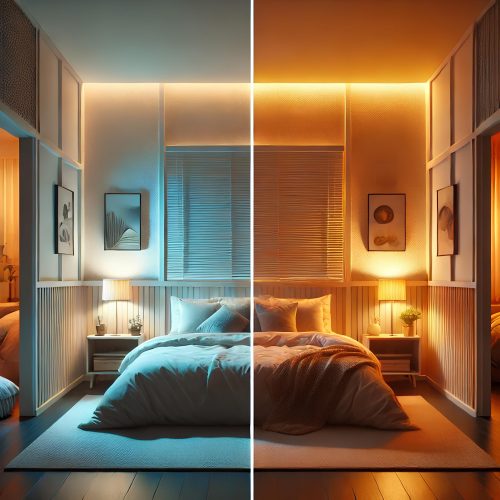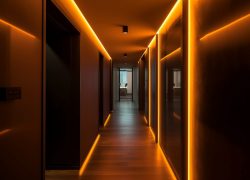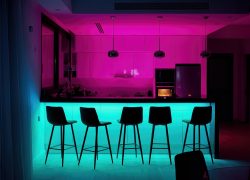TESLAbikar Episode 23 - Secrets of proper lighting
Light is not just a means of illuminating a space - its colour and intensity significantly affect our mood, productivity and biological rhythms. Let's take a look at how different colours of light affect our bodies and when it is best to use them.
The temperature of light and its meaning
The temperature of light is measured in Kelvin (K) and determines how "warm" or "cold" we perceive light:
- 1000 - 2000K: Ultra warm light reminiscent of a candle or fire
- 2000 - 2700K: Extra warm sunset-like light
- 2700 - 3000K: Warm white light
- 3000 - 4000K: Neutral white light similar to the morning sun
- 4000 - 6500K: Cold white light imitating the midday sun
- 6500K and more: Very cold light similar to bright daylight

When to use what temperature?
Ultra warm light (1000-2000K) - creates an intimate, calming atmosphere. It resembles candlelight and is ideal for evening relaxation, restaurants, wellness centres or romantic lighting. Due to its minimal blue light content, it is also suitable for late evening hours.
Warm light (2000-3000K) - is ideal for an evening of relaxation. It resembles natural evening lighting and promotes the production of melatonin, a hormone important for quality sleep. It is suitable for bedrooms, living rooms and wherever we want to create a cosy atmosphere.
Neutral light (3000-4000K) - is versatile and natural. It is suitable for kitchens, dining rooms and lounge areas where we spend time during the day. It does not distort colours and provides pleasant lighting for everyday activities.
Cold light (4000-6500K) - promotes alertness and concentration. It is ideal for study rooms, offices or school classrooms. It helps maintain attention and increases productivity, so it is best used during the workday.

Blue light and its influence
Blue light, which is primarily a component of cold white light and light from electronic devices, has a dual effect on our bodies:
Positive influences
- Increases attention and productivity
- Improves reaction time
- Supports a good mood during the day
- Helps regulate circadian rhythm
Negative influences
- Suppresses melatonin production
- May interfere with sleep quality
- Causes eye fatigue when viewing screens for long periods of time
- May contribute to sleep rhythm disorders
Blue light protection
For healthy sleep, it is important to limit exposure to blue light 2-3 hours before bedtime. You can:
- Use blue light filtering applications or modes on electronic devices
- Use in the evening for lighting with a temperature of 3000K and below
- Install smart bulbs with automatic temperature control according to the time of day
Coloured lighting and its trends
The advent of LED technology has opened up new possibilities in the form of coloured lighting. RGB LED strips and smart bulbs allow you to change colours according to mood or occasion. This trend is particularly popular among the younger generation who use coloured lighting as part of interior design.



Tips for optimal lighting
- In the study, combine a cool main light with warm ambient lighting.
- Use warm light in the bedroom and switch to ultra-warm tones at bedtime.
- In the living room, you can experiment with coloured LED strips to create atmosphere.
- Activate night mode on electronic devices two hours before bedtime.
- For evening reading, consider lighting with a temperature of 3000K or lower.
Conclusion
The right lighting can make a significant contribution to our comfort and productivity. At a time when we spend most of our time indoors, it is important to pay attention not only to the intensity but also to the colour of the light that surrounds us and its timing during the day.

